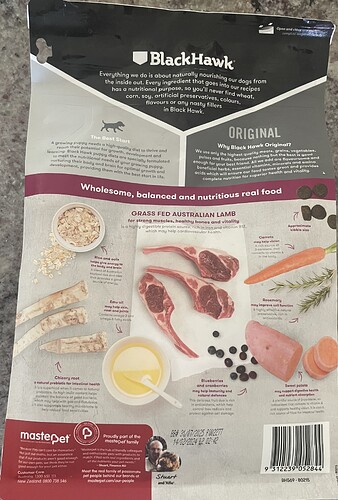These sort of images occur everywhere, including on foods for humans, and try and visually describe what is in the food. They are what is called for ‘illustrative purposes’. The lamb chops possibly aren’t what is exactly within the processed dog food, as the ingredient listed is lamb meal. But, many would associate lamb chops with the meat (lamb). It is worth noting that lamb meal could be anything from a lamb, including sourced from lamb chops.
What is interesting, is that the product is called 'Lamb" but also contains chicken meal as the second ingredient on the listing. It also has a range of other ingredients not presented for ‘illustrative purposes’ on the back of the packaging:
Lamb Meal, Chicken Meal, Peas, Tapioca, Chicken Fat (naturally preserved with Rosemary Extract, Mixed Tocopherols and Citric Acid), Potato, Sweet Potato, Chicken Gravy, Sugar Beet Pulp, Essential Vitamins and Minerals, Salmon Oil, Sunflower Oil, Chicory Root, Di-Calcium Phosphate, Egg, Alfalfa, Salt, Apple, Brewers Yeast, Pumpkin Seeds, Natural Antioxidants, Coconut Oil, Yoghurt Powder, Emu Oil, Blueberries, Cranberries, Dandelion Tea, Parsley, Peppermint Tea, Rosemary Extract, Chondroitin, Glucosamine, Carrots, Yucca Schidigera, Spinach, Kelp, Tomato, Beta Carotene.
I suspect that their market research shows that the illustrated ingredients are those most desired by dog owners, hence their presentation on the labels. I also suspect that it is trying to substantiate the claims that ‘Every ingredient that goes into our recipes has a nutritional purpose…’ I wonder if the herbs have a nutritional purpose, or are there because consumers often associate herbs with being healthy.

